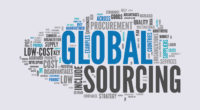Global Spending & Demand for Medicines: Up or Down?
Global demand & spending for medicines will increase to $1.9 trillion by 2027. COVID-19 vaccines will continue to be a growth driver, but what else is in play?
Tracking industry performance
What are the key growth indicators for the global bio/pharmaceutical market over the next five years (through 2027), and how will the industry perform over this time. That is the operative question for bio/pharma companies and their suppliers, and a recent report, Global Use of Medicines 2023 – Outlook through 2027, by the IQVIA Institute for Human Data Science, examines industry performance.
Total spending and global demand for medicines will increase over the next five years to approximately $1.9 trillion by 2027. The underlying growth rate of 3-6% in spend will be driven by new drug launches and wider use of recently launched brands despite efforts by payers to constrain their budgets and the availability of lower-cost options.
“COVID-19 continues to have an impact on pharmaceutical markets globally, and is estimated to continue expanding the pharmaceutical market through 2027, largely due to vaccines,” said Murray Aitken, Senior Vice President and Executive Director of the IQVIA Institute for Human Data Science, in commenting on the report. “However, there are significant uncertainties in the years ahead with the transition of the global COVID-19 pandemic to a new phase where vaccines and therapeutics are available but are used inconsistently.”
Key market data
Volume growth: Medicine use, as measured in defined daily doses, grew by 36% over the past decade, driven by increased access to medicines. However, growth is projected to slow through 2027 and reach a total of more than 3.4 trillion doses, up about 8% from the 2022 level. Highest volume growth is expected in Latin America, Asia and Africa, driven by a mix of population growth and expanded access while North America and Europe will see very low growth, according to the IQVIA Institute report. Per-capita medicine use varies by region with Japan and Western Europe having more than double the use of most other regions.
Spending and growth by regions: The global medicine market—using invoice price levels—is expected to grow at a compound annual growth rate (CAGR) of 3–6% through 2027 to about reach total global medicines spending of $1.9 trillion with diverging trends by region. Growth in developed economies continues at relatively steady rates with new products offset by patent expiries.
In the US, the largest national market in the global bio/pharmaceutical industry, with an approximate 40% share, growth, on a net price basis, is projected to increase at a CAGR of 1% to 2% through 2027, down from 4% CAGR for the past five years. The impact of exclusivity losses will increase to $140.7 billion over five years, including significant biosimilar introductions in 2023 and 2024. New brand spending in the US is projected to be higher than the last five years, but it will be a smaller share of total spending. Key elements of the Inflation Reduction Act (IRA), signed into law in 2022 and which included drug-pricing measures under Medicare, the US federal government health insurance program for individuals 65 or older, are expected to impact medicine pricing and cost-sharing among stakeholders. What the specific impact will be is yet to be determined as no baseline has been established, and the detailed plans for implementation of IRA for medicine pricing and cost sharing have not been provided, according to the IQVIA analysis.
Impact of COVID-19 on the use of medicines: COVID-19 products continues to have an impact on pharmaceutical markets globally and are estimated to expand the net cumulative pharmaceutical market by $500 billion from 2020 through 2027, mostly linked to vaccines, according to the IQVIA Institute report. Disruptions in demand for many other medicines, due to delayed diagnoses, continue to play out although global market growth is forecast to return to pre-pandemic projected levels by 2024. All regions around the world have exceeded previously projected first-wave vaccination rates while booster utilization is lagging. This creates substantial uncertainty about the future of the pandemic and the potential risks of re-emergence of infections, especially in regions of the world with the lowest immunization and booster rates, according to the report.
Growth in spending on specialty medicines: The share of specialty medicines continues to grow overall and in developed markets. Specialty medicines, as defined by the IQVIA Institute, are those medicines that treat chronic, complex, or rare diseases and possess additional distribution, care delivery, and/or cost characteristics, which require special management by stakeholders. Specialty medicines will represent about 43% of global spending in 2027 and 56% of total spending in developed markets, according to the IQVIA Institute report.
On a therapeutic sector basis, global spending on cancer drugs is expected to reach $370 billion by 2027, with growth accelerating from the launch and use of novel drugs and limited new biosimilar impact. Immunology spending growth will slow to 3-6% through 2027 due to price reductions associated with biosimilar competition as volume growth continues at 12% annually. New therapies for rare neurological disorders, Alzheimer’s disease, and migraines are expected to drive spending growth in neurology.
Biotech spending: Biotech will represent 35% of medicines spending globally and will include both breakthrough cell and gene therapies as well as a maturing biosimilar segment, according to the IQVIA Institute report. Major advances are expected to continue, especially in oncology and immunology although the outlook for next-generation biotherapeutics includes an uncertain range of clinical and commercial successes.
Further in-depth coverage at DCAT Week
Graham Lewis, Vice President of Global Pharma Strategy, IQVIA, will provide further insights on global bio/pharmaceutical industry performance at DCAT Week, the flagship event of the Drug, Chemical & Associated Technologies Association (DCAT) at its Pharma Industry Outlook program on Monday March 20, 2023 in New York. He will examine the current and projected performance and key trends driving bio/pharma industry performance, including growth prospects in innovator and generic drugs, key geographic markets, and leading therapeutic sectors. Further information, including how to register, may be found here.







